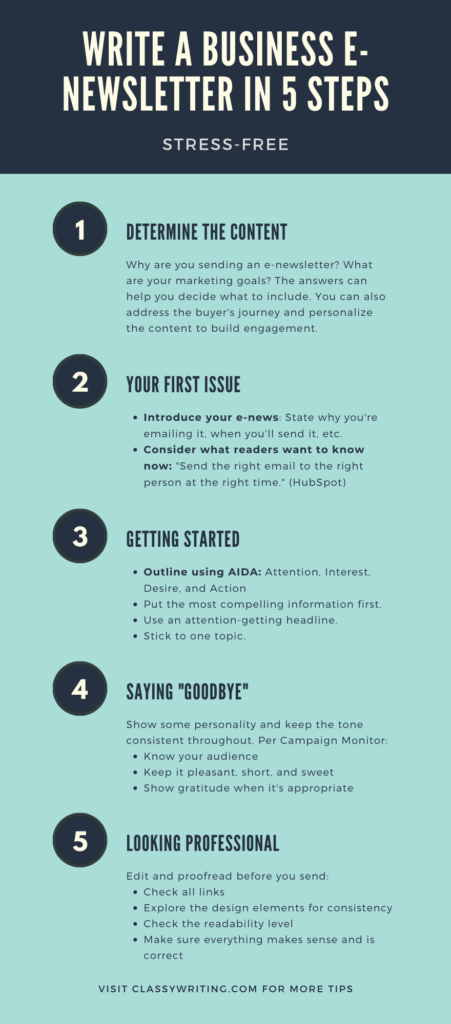5 Elements of an Effective Newsletter for Business
1. A descriptive headline – Among the most crucial elements of an effective newsletter for business, the subject line should refer clearly to the content while it entices people to open.
Example: Is your Rx running low? (DFD Russell Medical Centers)
It should also provoke curiosity. Use power words, numbers, news, or scarcity (“This Friday Only”) to grab attention. Subject Line, Sharethrough, Advanced Marketing Institute’s Headline Analyzer, and other analyzers can help you choose click-worthy headlines.
2. A simple structure and design – Follow AIDA, which stands for attention, interest, desire, and action. Generally speaking, put the most important information at or near the top, where people tend to look first.
Research and marketing firm Fenwick studied several B2B newsletters. Those they ranked the highest contained an average of 241 words, used few images, had one column, and featured the same colors and branding as the companies’ websites.
3. Interesting content – Ask yourself why you’re sending your newsletter to determine what to include. Do you want to get more leads?
After you’ve started, the challenge is to keep people reading. HubSpot suggests you do that through “building relevance.” If you know why you’re sending people your newsletter, ask yourself, “What value are they going to get from it?”
4. Personalized copy – Michael Katz, an expert on professional services and solopreneur newsletters, recommends you blend stories about your life experiences with your business knowledge to connect with readers and build trust.
A more personal touch may make you stand out as someone people can relate to rather than a faceless brand name. It can also keep your content interesting.
5. Ease of reading – Check the readability level. Some grammar experts advise that your content read at an eighth or ninth-grade level or below. To check the level, use The Hemingway App.
An overlooked part of newsletter design is compliance with accessibility standards such as the Americans with Disabilities Act of 1990 (ADA) and the European Union Accessibility Directive. The ADA requires certain businesses to accommodate people with disabilities. Web content for them should be accessible for navigation by voice, screen readers, or other assistive devices.
The ADA guidelines apply to businesses that run 20 or more weeks yearly with at least 15 full-time employees or those that provide public accommodation, such as inns and restaurants. These are the ADA legal requirements for an email.
Learn more about crafting engaging and effective business e-newsletters.
What do you think are the most effective elements of a newsletter? Feel free to comment below.
Need help with your e-newsletter? Check out The Ultimate Guide to Writing a Newsletter, my business newsletter writing packages, or request a free e-news audit.
Quotes
“When setting the goal for your email, you want to consider how to send the right email to the right person at the right time.” ~ HubSpot
“Regardless of which type of email you are sending, your reader needs to know what you’re trying to convey. Aim for a clean, straightforward design to display the value you are sending.” ~ HubSpot




